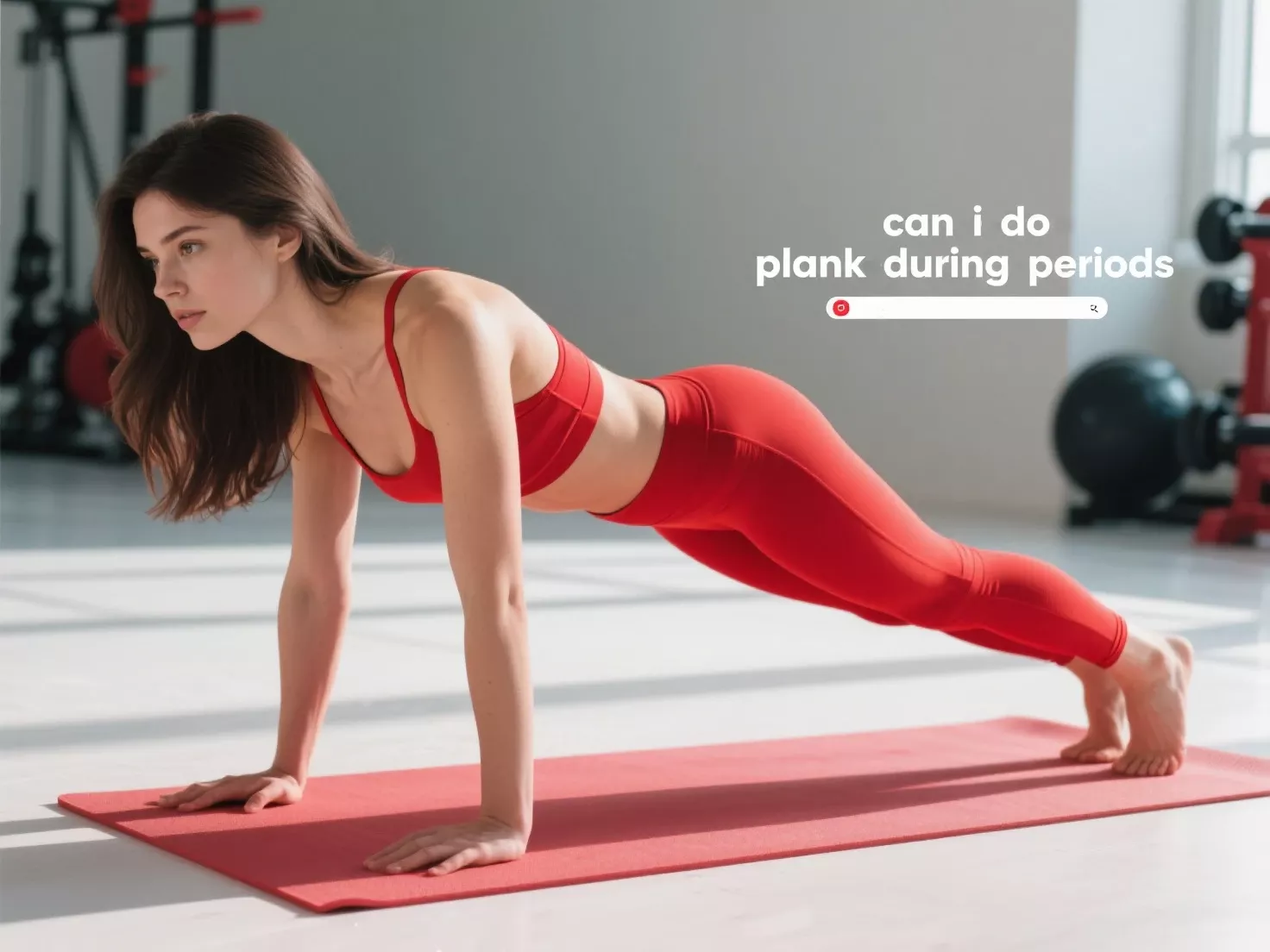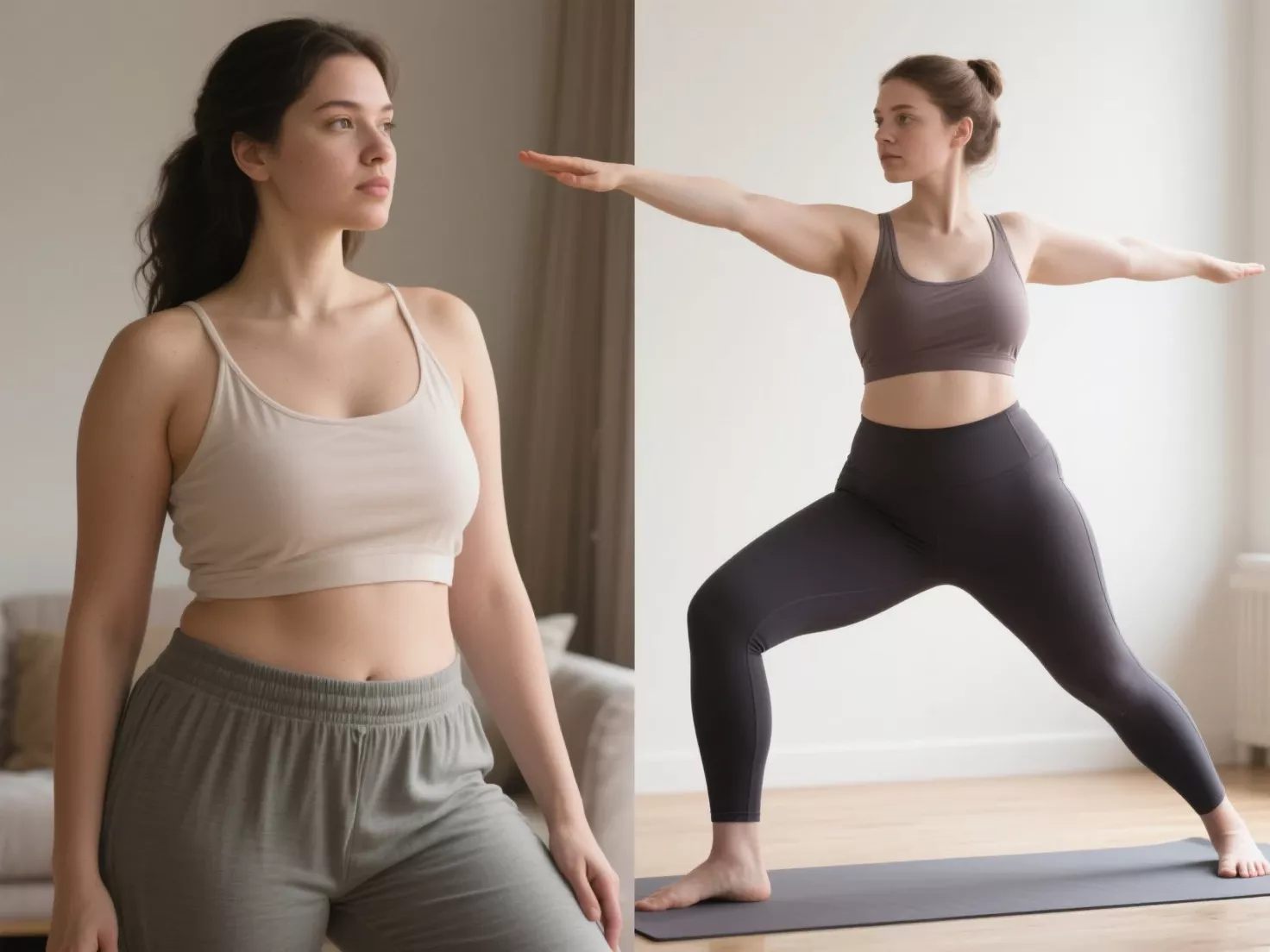When it comes to fitness and yoga during your menstrual cycle, one question many people ask is: “Can I do plank during my period?”
The answer isn’t a simple yes or no — it depends on how your body feels, what kind of period symptoms you’re experiencing, and how you approach the pose.
Planks are one of the most common and effective core-strengthening exercises, targeting the abdominal muscles, shoulders, back, and even glutes.

While generally safe, doing planks during your period can feel uncomfortable or beneficial depending on a few key factors. In this in-depth article, we’ll explore:
-
Whether plank is safe during menstruation
-
The potential benefits and drawbacks
-
When and how to modify the pose
-
Alternative yoga postures for period days
-
Expert tips for exercising during your cycle
🧘♀️ Understanding the Plank Pose
The plank pose (Phalakasana in yoga) is an isometric hold that engages:
-
Core muscles (rectus abdominis, transverse abdominis, obliques)
-
Shoulders and upper back
-
Glutes and hamstrings
-
Pelvic stabilizers
The benefits of plank include improved posture, better balance, enhanced abdominal strength, and increased endurance.
However, because it engages the abdominal and pelvic region, it can sometimes aggravate period discomfort, particularly if performed too intensely or for long durations.
✅ When You Can Do Plank During Periods
Plank can be done safely during your period, especially if:
-
You feel energetic and pain-free
-
You are in the middle or end of your cycle, when cramps and flow are lighter
-
You are used to doing core exercises regularly
-
You modify the pose based on your energy level and flow
In fact, doing light to moderate core work during your period may help:
-
Maintain circulation and digestion
-
Support the lower back and posture
-
Encourage endorphin release, which can reduce pain and improve mood
⚠️ When You Should Avoid or Modify Plank During Periods
However, certain menstrual symptoms can make planks feel uncomfortable, unproductive, or even painful. You might want to skip or modify plank if:
1. You Have Intense Cramps or Pelvic Pain
Plank contracts the abdominal muscles and increases intra-abdominal pressure, which can worsen cramping.
2. You Feel Bloating or Nausea
Holding tension in the core can be uncomfortable when bloated or if digestion is sluggish during menstruation.
3. You Experience Lower Back Pain
If your form is compromised due to fatigue or discomfort, you may strain your back or shoulders.
4. You’re Experiencing Fatigue or Dizziness
Hormonal shifts in the early days of your cycle can lead to low blood pressure or anemia, making any exertion feel draining.
🔔 Tip: Always listen to your body. If something doesn’t feel right — even if it’s usually easy — give yourself permission to rest or modify.
💡 How to Modify Plank for Comfort During Your Period
Rather than skipping it entirely, you can adjust the plank pose to make it more gentle and period-friendly:
| Modified Plank | Benefit |
|---|---|
| Knee Plank | Reduces abdominal pressure and relieves tension on pelvis |
| Forearm Plank on Knees | Eases wrist and shoulder strain while supporting the core |
| Inclined Plank on a Wall | Offers a gentle alternative with minimal core engagement |
| Use a Yoga Block or Bolster | Elevates hands for comfort and alignment |
| Hold for Shorter Time (10–20 seconds) | Prevents core fatigue and discomfort |
✅ Breathing Tip: Breathe slowly and deeply into the belly while holding plank — this helps relax the pelvic floor and reduce internal pressure.
🔄 Alternatives to Plank During Menstruation
If plank doesn’t feel right for your body during your period, try these gentle, effective core and restorative yoga poses instead:
| Pose | Why It Helps |
|---|---|
| Cat-Cow (Marjaryasana-Bitilasana) | Gently mobilizes spine and relieves abdominal tension |
| Bridge Pose (Setu Bandhasana) | Activates glutes and opens hips while relieving cramping |
| Child’s Pose (Balasana) | Deeply relaxing, helps release tension in back and hips |
| Legs-Up-The-Wall (Viparita Karani) | Enhances circulation and relieves fatigue |
| Reclined Bound Angle (Supta Baddha Konasana) | Opens the pelvis and supports breath |
🧠 Exercise and the Menstrual Cycle: A Quick Overview
| Cycle Phase | Energy Level | Recommended Exercises |
|---|---|---|
| Menstrual (Days 1–5) | Low to moderate | Gentle yoga, walking, restorative poses |
| Follicular (Days 6–13) | Rising energy | Strength training, cardio, flow yoga |
| Ovulation (Day 14) | Peak energy | High-intensity, power yoga, core work |
| Luteal (Days 15–28) | Fluctuating energy | Moderate yoga, stretching, light cardio |
During your menstrual phase, your body is shedding the uterine lining, and hormone levels are at their lowest.
This is often a time for gentle movement, grounding practices, and rest.
🙋 Frequently Asked Questions
1. Can planking make period cramps worse?
Yes, for some people. Plank increases abdominal pressure and might intensify cramps. If you’re already cramping, choose gentler poses.
2. Is core work safe during periods?
Yes, as long as it doesn’t cause discomfort. Modified core exercises can support digestion and posture without increasing cramps.
3. How long should I hold plank during my period?
Start with 10–15 seconds, and build gradually if you feel comfortable. Avoid long holds if you feel pelvic or back tension.
4. Is yoga better than strength training during periods?
For many people, yes. Yoga offers flexibility and relaxation, which are ideal during menstruation. But some still enjoy strength training with modifications.
5. Should I exercise at all during my period?
That depends on how you feel. Light movement like yoga, stretching, or walking can ease symptoms. But rest is just as valid — it’s part of the cycle.
🌸 Final Thoughts: Your Cycle, Your Choice
Yes, you can do plank during your period, but it’s essential to listen to your body and modify your practice with care.
What feels empowering to one person may feel exhausting to another.
Honor your cycle, adjust your movement accordingly, and know that your body’s signals are trustworthy.
“Your menstrual cycle isn’t a barrier to movement — it’s a rhythm to move with.”
If plank feels right, keep it short and supported. If it doesn’t, let it go and return to it later in your cycle.
Yoga is not about pushing through discomfort, but about cultivating awareness, ease, and connection.



